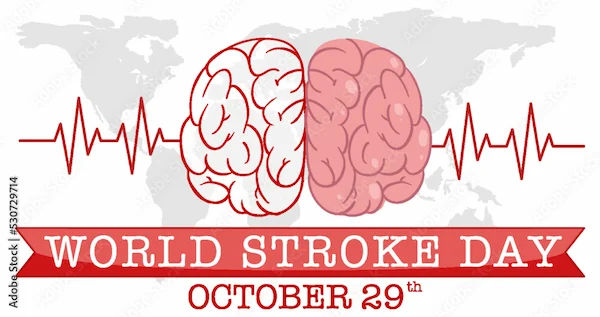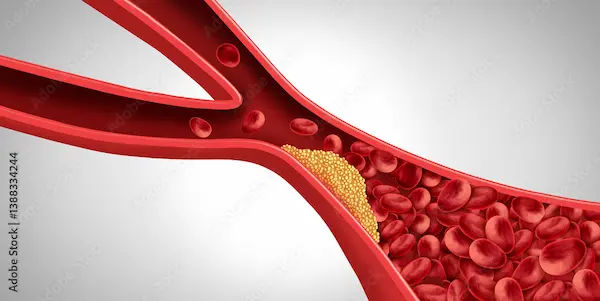Guide to Recognize And Prevent Stroke
Learn the essential warning signs of a stroke with the FAST method. Understand risk factors and discover practical steps to prevent a stroke and protect your health

Written by Dr. J T Hema Pratima
Reviewed by Dr. Rohinipriyanka Pondugula MBBS
Last updated on 6th Oct, 2025

Introduction
A stroke is a medical emergency that strikes suddenly, often without warning, and can change a life in an instant. It occurs when the blood supply to part of your brain is interrupted or reduced, preventing brain tissue from getting oxygen and nutrients. Brain cells begin to die within minutes. Knowing how to recognize the signs and understanding how to prevent a stroke is arguably some of the most critical health knowledge you can possess. This guide is designed to empower you with clear, actionable information. We will break down the different types of strokes, drill into the lifesaving FAST acronym for symptom identification, and provide a comprehensive roadmap for risk reduction through lifestyle changes and medical management. Our goal is to demystify this condition, turning fear into preparedness and awareness into action, because when it comes to a stroke, every second truly matters.
What is a Stroke? A Brief Overview
A stroke, often called a "brain attack," is a disruption of blood flow to the brain. To understand how to prevent a stroke, it's helpful to know what you're up against. There are two main types, each with a different cause, but both leading to the same dangerous outcome: brain cell death.
Ischemic Stroke: The Most Common Type
Accounting for about 87% of all strokes, an ischemic stroke happens when a blood clot blocks an artery leading to the brain. This clot can form directly in the narrow arteries of the brain (thrombotic stroke) or travel from elsewhere in the body, such as the heart, and lodge itself in a brain artery (embolic stroke). The underlying cause is often atherosclerosis—the buildup of fatty deposits (plaque) that narrow the arteries, making them prone to clogging. Managing conditions like high cholesterol and high blood pressure is fundamental to preventing this type of stroke.
Hemorrhagic Stroke: When a Blood Vessel Bleeds
A hemorrhagic stroke is less common but often more deadly. It occurs when a weakened blood vessel in the brain ruptures and bleeds into the surrounding tissue. The leaking blood creates pressure on brain cells, damaging them. The two main types of weakened vessels are aneurysms (balloon-like bulges) and arteriovenous malformations (tangles of faulty vessels). Uncontrolled high blood pressure is a primary culprit, as it can strain and weaken artery walls over time until they burst.
Transient Ischemic Attack (TIA): The "Warning Stroke"
A Transient Ischemic Attack (TIA), or "mini-stroke," is caused by a temporary clot. The symptoms are identical to a full-blown stroke but typically last only a few minutes to an hour and leave no permanent damage. However, a TIA is a major warning sign that a more severe stroke may be imminent. Ignoring a TIA is a critical mistake. It's an urgent opportunity to consult a doctor and take aggressive steps to prevent a major cerebrovascular accident.
Consult Top Specialists for Personalised Tips
How to Recognize a Stroke?: Every Second Counts
The ability to recognize a stroke quickly is the single most important factor in determining the outcome. Speed is critical because certain emergency treatments, like clot-busting drugs, are only effective within a narrow window after symptoms begin.
Remembering FAST: The Crucial Acronym
The FAST acronym is a simple, globally recognized tool designed for everyone to remember the most common stroke symptoms.
Face Drooping:
Ask the person to smile. Does one side of the face droop or is it numb? Is their smile uneven or lopsided?
A - Arm Weakness:
Ask the person to raise both arms. Does one arm drift downward? Is there weakness or numbness in one arm?
S - Speech Difficulty:
Ask the person to repeat a simple phrase. Is their speech slurred, strange, or difficult to understand?
T - Time to Call Emergency Services:
If you observe any of these signs, even if they seem to go away, call your local emergency number immediately. Note the time when the symptoms first appeared.
Beyond FAST: Other Sudden Stroke Symptoms
While FAST covers the key signs, a stroke can manifest in other ways. Be aware of these additional sudden symptoms:
Sudden numbness or weakness in the leg, face, or especially on one side of the body.
Sudden confusion, trouble understanding speech, or difficulty speaking.
Sudden trouble seeing in one or both eyes (blurred or blackened vision, or double vision).
Sudden trouble walking, dizziness, loss of balance, or lack of coordination.
Sudden, severe headache with no known cause, which may be accompanied by vomiting or altered consciousness.
Why is Immediate Action Non-Negotiable?
The "Time is Brain" Principle Explained
The phrase "Time is Brain" is not just a slogan; it's a medical reality. It's estimated that every minute a stroke goes untreated, the brain loses about 1.9 million neurons. This is comparable to accelerated aging—every hour without treatment is like aging the brain 3.6 years. Prompt treatment can mean the difference between a minor, recoverable injury and a permanent, severe disability or death. Do not drive the person to the hospital yourself unless absolutely no other option exists. Ambulance paramedics can begin life-saving treatment en route and alert the hospital, ensuring the stroke team is ready upon arrival.
What to Do While Waiting for the Ambulance?
While waiting for emergency services:
1. Keep the person calm and lying down in a comfortable position, preferably on their side with their head slightly elevated if they are conscious.
2. Do not give them anything to eat or drink, as stroke can impair swallowing and lead to choking.
3. Note the exact time the symptoms started. This information is crucial for doctors.
4. Loosen any tight clothing.
5. Be prepared to tell the operator and paramedics about the person's symptoms, medical history, and any medications they are taking.
How to Prevent a Stroke?: Taking Control of Your Health
Up to 80% of strokes are preventable. Prevention hinges on managing underlying health conditions and making positive lifestyle choices. This is where you have the most power to prevent a stroke from happening.
Managing Medical Conditions: Your First Line of Defense
Controlling High Blood Pressure (The Silent Killer):
This is the most significant controllable risk factor. High blood pressure damages arteries over time, making them more susceptible to blockages and ruptures. Regular monitoring is essential. If your home blood pressure readings are consistently high, consult a doctor online with Apollo24|7 to discuss management strategies, which may include medication and lifestyle adjustments.
Managing Atrial Fibrillation and Cholesterol:
Atrial Fibrillation (AFib), an irregular heartbeat, can cause blood clots to form in the heart that can travel to the brain. High levels of LDL ("bad") cholesterol contribute to plaque buildup. Working with your doctor to manage these conditions with medication is a cornerstone of stroke prevention.
Embracing a Heart-Healthy Lifestyle
The Power of a Balanced Diet (DASH & Mediterranean):
Diets like the DASH (Dietary Approaches to Stop Hypertension) and Mediterranean diets are proven to reduce stroke risk. They emphasize fruits, vegetables, whole grains, lean proteins, and healthy fats while limiting salt, saturated fats, and processed foods. Reducing sodium intake is particularly effective for blood pressure control.
Incorporating Regular Physical Activity:
Exercise helps control weight, lowers blood pressure, and improves cholesterol levels. Aim for at least 150 minutes of moderate-intensity aerobic activity (like brisk walking) or 75 minutes of vigorous activity each week.
The Importance of Weight Management:
Being overweight or obese increases your risk of other stroke risk factors like hypertension, heart disease, and diabetes. Even a modest weight loss of 5-10% can make a substantial difference.
Making Smart Lifestyle Choices
Quitting Smoking and Vaping:
Smoking accelerates clot formation, thickens blood, and increases plaque buildup in arteries. Quitting is one of the most powerful changes you can make for your vascular health.
Limiting Alcohol Consumption:
Excessive alcohol consumption can raise blood pressure and contribute to atrial fibrillation. If you drink, do so in moderation—no more than one drink per day for women and two for men.
Conclusion
Understanding how to recognize and prevent a stroke empowers you to protect not only your own health but also the lives of those around you. Recognition is about speed and knowing the signs—primarily through the FAST acronym. Prevention, on the other hand, is a lifelong journey of proactive health management. It involves partnering with your doctor to control medical conditions and making daily choices that support your vascular health. While some risk factors like age and family history are beyond our control, the vast majority are manageable. By adopting the strategies outlined in this guide, you are taking significant steps to reduce your risk and ensure a healthier future. Share this knowledge with your loved ones; awareness is a gift that can save a life.
Consult Top Specialists
Consult Top Specialists for Personalised Tips

Dr. Ashok M L
General Physician/ Internal Medicine Specialist
24 Years • MD Med.
Bengaluru
Apollo Hospitals Jayanagar, Bengaluru
(75+ Patients)

Dr. M L Ezhilarasan
General Practitioner
6 Years • MBBS
Visakhapatnam
Apollo 24|7 Clinic - Andhra Pradesh, Visakhapatnam

Dr. Chethan T L
General Physician/ Internal Medicine Specialist
5 Years • MBBS, MD, DNB (General Medicine)
Bengaluru
Apollo Medical Center, Marathahalli, Bengaluru
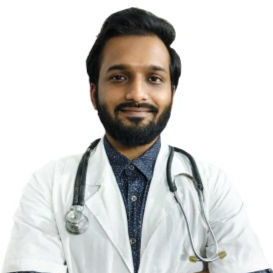
Dr. Mohammed Kamran
General Practitioner
5 Years • MBBS, FIDM
Nashik
Apollo 24|7 Clinic - Maharashtra, Nashik
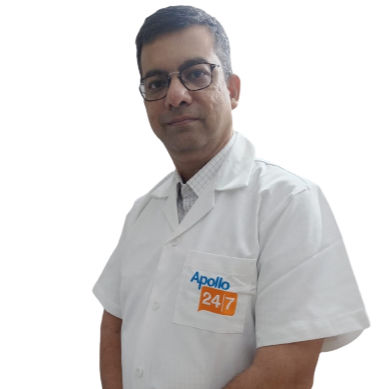
Dr. Rajib Ghose
General Physician/ Internal Medicine Specialist
25 Years • MBBS
East Midnapore
VIVEKANANDA SEBA SADAN, East Midnapore
Consult Top Specialists

Dr. Ashok M L
General Physician/ Internal Medicine Specialist
24 Years • MD Med.
Bengaluru
Apollo Hospitals Jayanagar, Bengaluru
(75+ Patients)

Dr. M L Ezhilarasan
General Practitioner
6 Years • MBBS
Visakhapatnam
Apollo 24|7 Clinic - Andhra Pradesh, Visakhapatnam

Dr. Chethan T L
General Physician/ Internal Medicine Specialist
5 Years • MBBS, MD, DNB (General Medicine)
Bengaluru
Apollo Medical Center, Marathahalli, Bengaluru

Dr. Mohammed Kamran
General Practitioner
5 Years • MBBS, FIDM
Nashik
Apollo 24|7 Clinic - Maharashtra, Nashik

Dr. Rajib Ghose
General Physician/ Internal Medicine Specialist
25 Years • MBBS
East Midnapore
VIVEKANANDA SEBA SADAN, East Midnapore
More articles from Stroke
Frequently Asked Questions
Can young people have a stroke?
Yes. While the risk increases with age, strokes can occur at any age, including in children. Factors in younger adults can include underlying heart conditions, blood clotting disorders, uncontrolled high blood pressure, substance abuse, and trauma to the neck arteries.
What is the difference between a stroke and a heart attack?
A heart attack is a blockage of blood flow to the heart muscle. A stroke is a blockage or bleed affecting the brain. Both are medical emergencies caused by problems with blood vessels, but they affect different organs.
What are the long-term effects of a stroke?
The effects depend on the stroke's location and severity in the brain. They can include paralysis or weakness on one side of the body, speech and language difficulties, memory and thinking problems, emotional changes, and pain. Rehabilitation is crucial for recovery.
How can I check for stroke risk at home?
You cannot self-diagnose a stroke risk, but you can monitor key risk factors. Use a home blood pressure monitor, get regular check-ups for cholesterol and diabetes, and maintain a healthy lifestyle. For a comprehensive assessment, it's best to consult a doctor.
What is the recovery process like after a stroke?
Recovery is a gradual process that often involves a team of specialists, including physical, occupational, and speech therapists. The most significant progress usually happens in the first few months, but improvement can continue for years with dedicated rehabilitation.

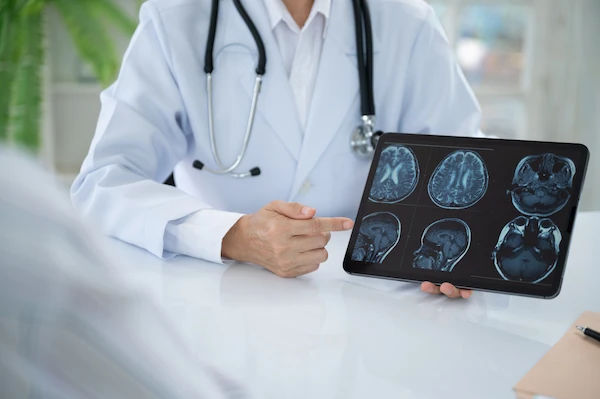
_0.webp)
